
Salty Sam’s Fun Blog for Children
Number 471
Trees Fighting Pollution
Hello Everyone

Last year, Rocky Bay had a Plant a Tree in 2023 campaign.
This year, the children at the Rocky Bay Primary School were determined to start a Plant Some More in 2024 campaign and luckily the Rocky Bay Mayor gave them his full support.
Lots of children are worried about the future of the ecosystems of the world and the future of the planet. Research has shown that a huge proportion of the Amazon rainforest is emitting more CO2 than it is absorbing because of deforestation. While trees are growing they absorb carbon dioxide from the atmosphere but dead trees release it again.
But planting more trees is a very concrete way of doing something to help.
Taking positive action about something is always better than just worrying about it or just complaining about it.
The activity on the surface of the Sun has a huge impact on the weather systems on Earth. We cannot do anything to influence this activity but we can change our activity on our planet – and also our landscapes.
This is how trees help…
Water is taken into the tree by its roots from the earth it is standing in.
The water moves up into the whole tree and if you use a very sensitive microphone, you can hear a sort of whooshing, slurping, pumping sound as the water moves up through all the tiny ‘moving water about’ cells in the trunk.
The scientific name for these cells is xylem.
Trees soak up carbon emissions and pollution.
Trees are like the lungs of the Earth.
Carbon is absorbed into tiny pores (holes) in the leaves. lt combines with the water in the leaves and energy from sunlight.
Chemical reactions turn the carbon into food for the tree.
The by-products of this chemical reaction are oxygen and water vapour.
The oxygen gives us cleaner air to breathe. Trees capture toxins and impurities in the air.
The water vapour can help to produce a microclimate around the tree because it cools the atmosphere.
Trees cool cities in hot summers and shelter buildings from cold wind in winter. With their canopies trees catch heat before it hits the pavements and heavy rain before it floods the roads.
Trees work as air-conditioning units without using any electricity!
They make landscapes more interesting and ground more stable in cities and in the countryside.
They also feed and harbour wildlife both in cities and in the countryside.
By law, workmen must carefully dig around street trees when they have the pavement or road up to work underground. They must carefully pick around tree roots so as to not damage them. They must not use machinery that will cut through the roots or damage the bark.
A tree with extensive bark damage will not survive.
lt has been estimated that people who live in polluted cities live on average seven years less than people who live in places with clean air. Surgeons have noticed that the tubes in city dwellers’ lungs become blackened with particles from the air.
You can grow trees and then plant them for free and they don’t cost anything to run.
This is what we did in our project we named Operation Muddy Hole, last winter.
ln ancient woodland, where the soil has not been farmed for hundreds of years, there is an underground biological communication system consisting of tree roots and fungi that had been dubbed the ‘woodwide web’.
Yes, trees really do communicate with each other and many scientific experiments have shown this to be true.
These ancient woodland habitats create the most bio-diverse ecosystems in the country and this is true of other countries too, whether they are in temperate climates or tropical ones.
We hope that by planting our Operation Muddy Hole trees by the side of ancient woodland, we will extend the ancient underground woodwide web that exists there over the years to come.
So Bill and Bob collected lots of tree seeds last autumn and Emily, Henry and Roger helped them too.
They put lots of pots of planted seeds in their back gardens and lots in Auntie Alice’s garden too.
The seeds will vernalize (get cold over the winter) and any viable (alive and ready to grow) seeds will sprout this spring.
Then the seeds can be carefully potted up into individual plugs which can go straight in the ground. They can be planted using a T-shaped hole method.
This is how you do that…
Cut the bottom of the T with a spade and lift the spade out of the ground again.
Then cut into the earth again, this time forming the top of the T – but don’t remove the spade.
lnstead, pull the handle down and this action will lift the first cut apart.
Put the little tree plug in the soil that has lifted apart and move the spade handle to an upright position.
The little tree will be lowered down into the soil.
Just gently firm the soil with your foot to make sure there are no air pockets.
This is a really clever, fast and easy way to plant small trees when they are about one or two years old.
lt is easier with two people working together.
One person can hold the spade steady while a second person can carry the saplings and drop them into the holes the person with the spade is creating.
The children have been collecting all the cardboard tubes they can to use as free pots for the plugs. The card will rot away in the ground.
lt is really important though that the trees are looked after, after they have been planted. lf they are not looked after, the whole project of planting them will be a waste of time!
They must have guards on them to protect them from browsing deer and nibbling rabbits.
They must be saved from choking grass. This can be done more easily by putting down mulch or felt rings rather than strimming around them – because the bark could be cut by a strimmer.
Small trees must be watered in severe drought. Their roots are not properly established for at least two years.
The tiniest of gardens can support a tree. They must be planted at least two metres away from house walls and if that is not possible you can grow them in pots. Rowans and crab apples are very pretty and will give you colour through the seasons. A lot of fruit trees are grown on dwarf stock. Willow-leaved pear and Kilmarnock willow are really tiny.
Blackthorn trees are quite small, blossom in very early spring and are good for wildlife.
We visit the trees we planted in Operation Muddy Hole now and again to keep an eye on them.
We are very please with their progress so far!
lf you like my blog, please support it by telling all your friends and followers about it.
Thank you!
And see you again next Fun Friday!
Love and kisses
Salty Sam

www.christina-sinclair.com


Bill and Bob’s Joke of the Week![]()
![]()
Bill: How do trees make themselves heard?
Bob: l don’t know. Do tell me!
Bill: They use amp-leaf-ication!

Salty Sam © Christina Sinclair 2015
Unauthorized use and/or duplication of material from this blog without express and written permission from this blog’s author and owner is strictly prohibited.
Links may be used to www.christina-sinclair.com

Picture Gallery
 Bark covers trunk and branches
Bark covers trunk and branches
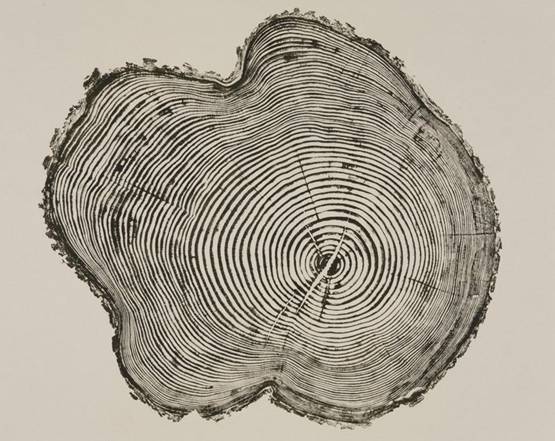 A cross-section of a tree trunk
A cross-section of a tree trunk
The flaky surface of the trunk is dead bark but just underneath it is live bark
Under that is sapwood containing xylem cells to transport water
and phloem cells to transport nutrients up from the soil
A ring is produced every summer and a ring is produced every winter
the summer ones are larger when growth takes place
and the winter ones are smaller because this is when the tree is in dormancy (asleep)
 Tree roots like to keep near the surface of the ground to gather nutrients
Tree roots like to keep near the surface of the ground to gather nutrients
But go down deep enough to firmly anchor the tree
 If you plant trees delivered in hessian, plant the tree with the hessian
If you plant trees delivered in hessian, plant the tree with the hessian
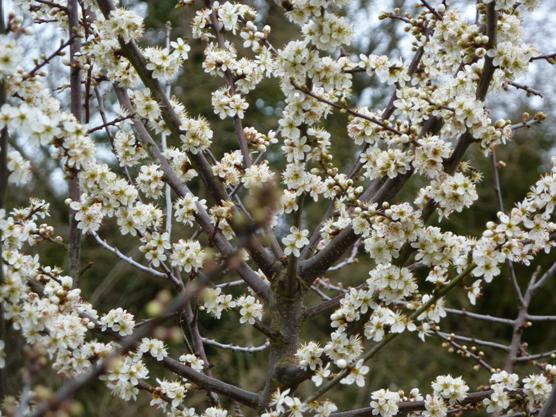 Blackthorn blossom comes out in early spring
Blackthorn blossom comes out in early spring



 THE SALTY SAM NEWS DESK
THE SALTY SAM NEWS DESK

This week, my Auntie Alice decided to plant three crab apple trees in her garden.
Crab apples are our oldest native fruit tree.
Britons were making a fermented drink from crab apples as long ago as 3,000 BC. For 5,000 years, they have been cider drinkers and today drink a huge percentage of all the cider made from modern apples is drunk in Britain.
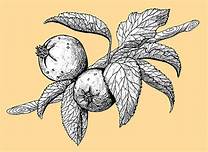
Crab apples have beautiful blossom in the spring and lots of fruits in the autumn. They are amongst the first trees to start sprouting green leaves in the early springtime.


The fruits are not nice to eat as they are picked off the tree, but you can cook with them. When they are cooked their taste is quite strong.
They are good for making jams and jellies because they have a high level of pectin. Pectin is a substance found in fruit that helps jam to set – that means it turns from runny to solid. Not all fruit has enough pectin to set jam well but the good news is that you can mix other high pectin fruits in with these low pectin fruits to get a good set for your jam.
Planting trees when lots of rain is expected is a good idea because newly planted trees need lots of water to drink. This is a good time of year to plant trees.

Making crab apple jelly is easy but make sure you have permission to deal with very hot liquids or get an adult to help you.
Your crab apples will be ready to pick about September – October.
Wash them before you start cooking them and remove any stalks.
The stalks can be put on the compost heap later.
Put a number of whole crab apples into a large pan and cover them with water.
Bring the water to the boil and then let the water simmer until you can see that all the crab apples have become very soft and mushy.
Line a big strainer or colander with muslin and let the jelly take the time it needs to drip through into a large bowl overnight. If you force the jelly through the muslin, you will get cloudy jelly.
When your juice is ready, you must sterilize some jars so that your product can be preserved and stored for a long time.
You can do this with very hot water, an oven or microwave. You can’t put metal lids into a microwave, so they can be sterilized with very hot water.
Wash the jars with detergent before you sterilize them.
You can see how many jars you will need from the amount of juice you have gleaned from your crop.
You can put your crab apple mush onto the compost heap. But do it when it has cooled in case you have any worms in your heap – otherwise they might get a nasty, hot shock!
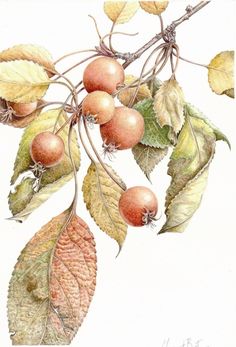
Then you will need to measure out how much juice you have.
If you need to divide it up to measure it, you may want to write down a running total so that you don’t forget where you are up to.
Put all the juice into your pan and add some sugar.
For every 600g juice, you will need 450g sugar.
(Or 21 ozes juice to 16 ozes sugar)
This time keep your heat low until the sugar has dissolved. Keep stirring the mixture to speed the process.
When the mixture is clear and you can see no more grains of sugar, bring the liquid up to the boil.
You need to boil your jelly to achieve a setting point.
You can test to see whether your jelly has reached the right point by blobbing a spoonful of jelly onto a saucer that has been chilled in the fridge.
When the setting point is reached the surface of the jelly will wrinkle as it quickly cools on the saucer.
You can push the side of the jelly up to see that the surface is wrinkling well too if you like but…
A word of caution…
Although this is a very easy preserve recipe to follow
ANY LIQUID WITH A LOT OF SUGAR IN IT SCALDS VERY EASILY
So you may want to cover your arms and hands well in case any liquid splashes as you deal with it.
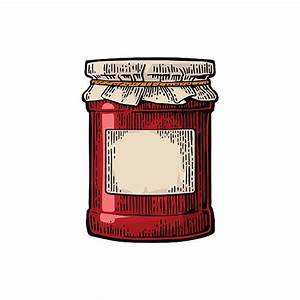
It might be best to let an adult put the hot jelly into the sterilized jars when the setting point has been reached.
A wide jam funnel helps with this procedure.
The jar lids need to be put on straight away.
When the jars are cool, you can put labels on the jars and little fabric hats that need to be tied on with elastic bands.
You will find it easier to write on the labels before they have been stuck on the jars. If the labels are plain white ones, you can draw pictures around the writing to make them more attractive.
It is a good idea to put the date on the label too so that you can rotate your stock and keep using the oldest preserves up first.
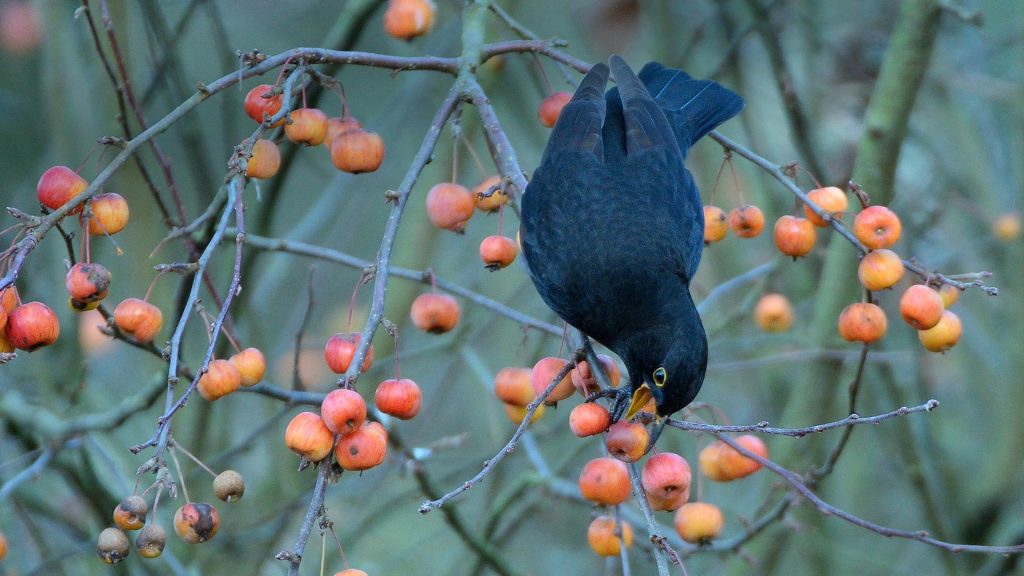

*********************
TO ADVERTISE ON THIS BLOG
PLEASE CONTACT:
christina.sinclair.ads@aol.co.uk
*********************

 Quick Quiz
Quick Quiz
lf you want to start gardening, there are basic tools you will need to work in the garden. Can you work out what they are?
- h _ _ _ t_ _ _ _ _
- h _ _
- w _ _ _ _ _ _ _ c _ _
- s _ _ _ _ _ _ _ _
- g _ _ _ _ _ s _ _ _ _
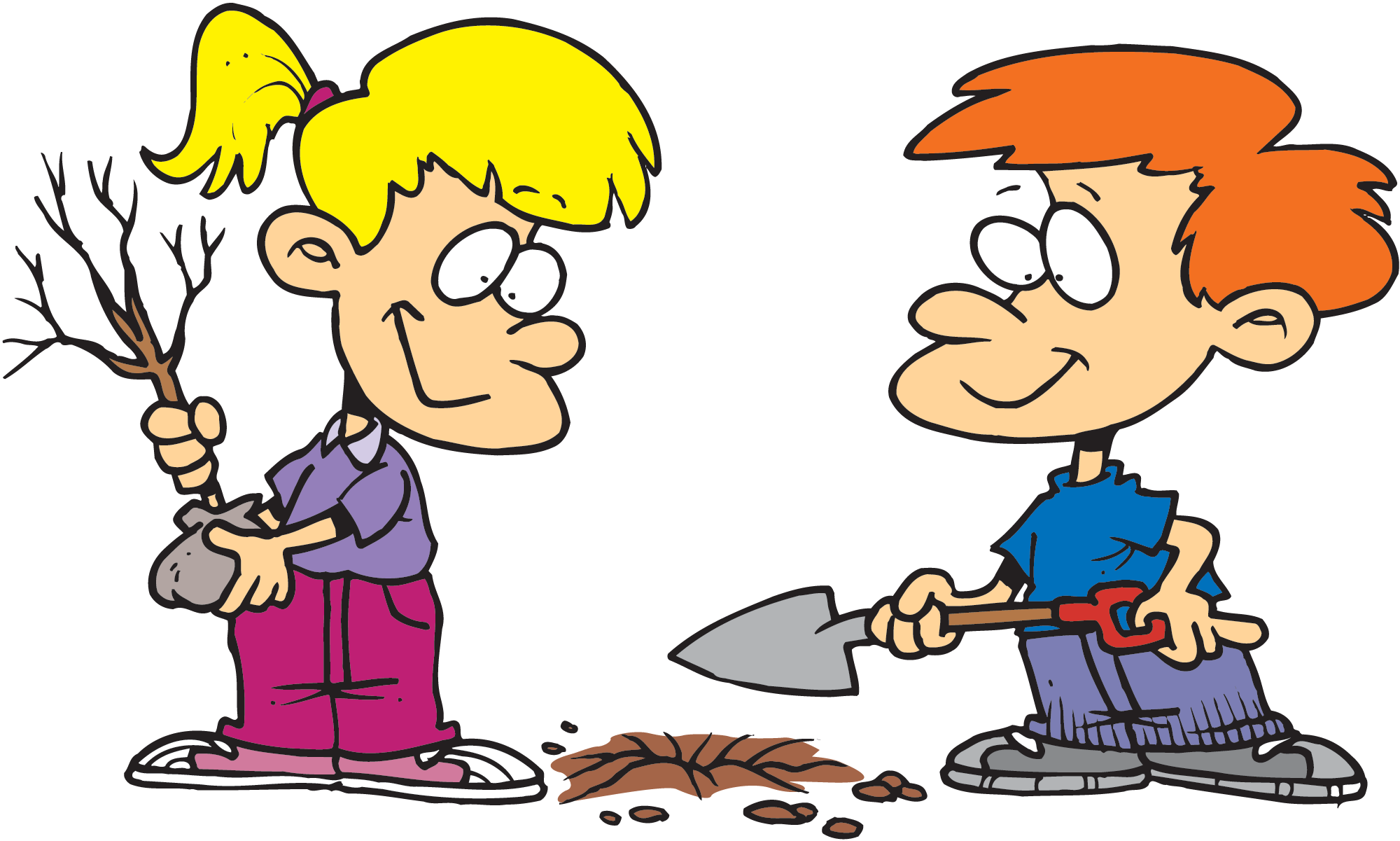



lt’s the Weekend!
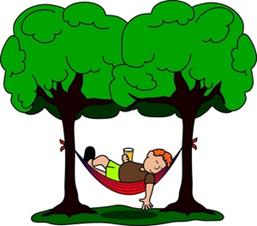
HOW TO MAKE A RlBBED HAT AND COWL
The hat is big enough for an adult or large child. For a small child, cast 32 stitches onto your needles instead of 40.
The cowl falls each side of one shoulder. A cowl can be worn under a jacket to keep your neck warm instead of a scarf which can be bulky or fall down and get in the way when you are working in the garden.
A 100g ball of dk yarn will be enough yarn to make the hat and cowl set.
You will also need a large button to hold the two ends of the cowl together.
RIBBED COWL (KNIT ONE)
Using 4mm knitting needles and pink dk yarn cast on 25 stitches
Knit 2 rows of garter stitch
Knit 1 row
Purl 1 row
Knit 1 row
Purl 1 row
Purl 1 row
Knit 1 row
Purl 1 row
Knit 1 row
Repeat the last 8 rows 16 times
Knit 1 row
Purl 1 row
Knit 1 row
Purl 1 row
Purl 1 row
Knit 1 row
Cast off
HAT (KNIT TWO)
Using 4mm knitting needles and pink dk yarn cast on 40 stitches (32 stitches for a small child)
Knit 1 row
Purl 1 row
Knit 1 row
Purl 1 row
Purl 1 row
Knit 1 row
Purl 1 row
Knit 1 row
Repeat the last 8 rows 7 times (6 times for a small child)
Knit 1 row
Cast off
RIBBED BOTTOM (KNIT TWO)
Using 4mm knitting needles and pink dk yarn cast on 54 stitches (38 stitches for a small child)
Slip 1 (knit 2, purl 2) repeat the last 4 stitches until 1 stitch remains, purl 1
Repeat the last row 7 times (5 times for a small child)
Cast off rib-wise
TO MAKE UP
- Sew the sides seams of the crown up using over-sew stitching with right sides together – you should have a flat piece of knitting on the outside
- Sew the side seams of the ribbing up right sides together
- Sew the ribbing to the crown of the hat wrong sides together using over-sew stitching around the bottom of the hat to create a crisp edge
- Run a length of yarn around the top of the hat to pull in the top – secure the ends and neaten
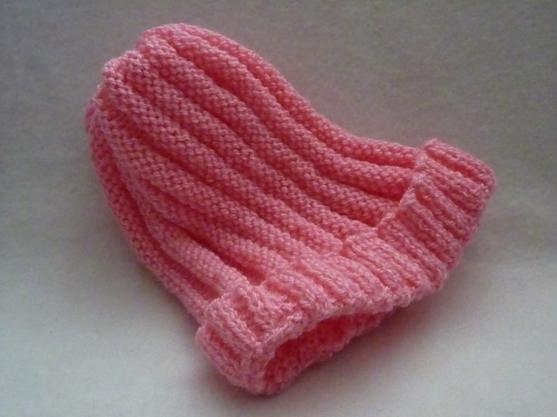
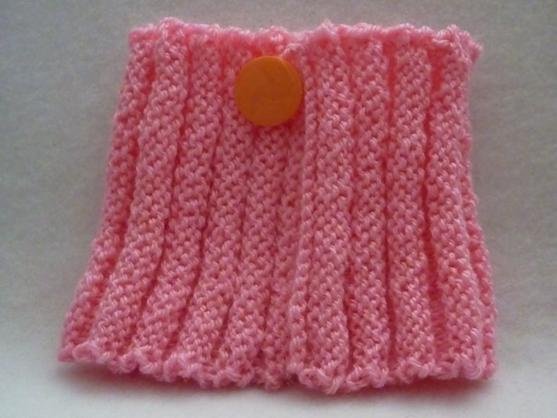
Please note that the material on this blog is for personal use and for use in classrooms only.
It is a copyright infringement and, therefore, illegal under international law to sell items made with these patterns.
Use of the toys and projects is at your own risk.
©Christina Sinclair Designs 2015


Quick Quiz Answers
- hand trowel – this is very useful for planting seedlings, getting out very deep roots and is very necessary for gardening in window boxes and tubs
- hoe – this is the easiest way to get rid of little weeds between the plants you want to grow in your garden
- watering can – you must have a rose on the spout of your can when watering tiny seedlings otherwise they will wash away – of course you can use a hosepipe outside if you have a big garden
- secateurs – these are like very strong scissors and should only be used sensibly by children who are old enough to use them
- garden spade – this will be needed to plant trees




Very easy on the eye – easy to read. Love the look and the content.
Thank you very much for that KDL!